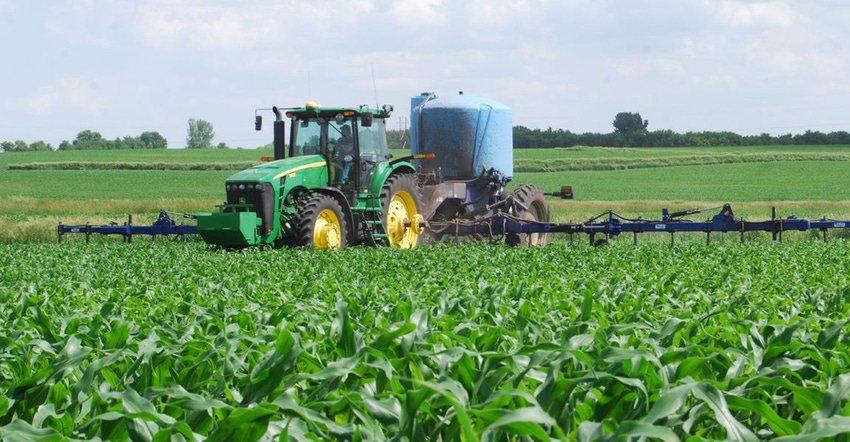July 2, 2019

The Iowa State University Forecast and Assessment of Cropping sysTemS web page has several helpful online programs for use by farmers and agronomists. FACTS has been updated to include regional scale forecasts — not just forecasts for Iowa.
These regional-scale forecasts cover Iowa, Illinois and Indiana to provide weather, soil water and soil N mineralization information. Additional crop information will become available with future updates.
Spring rains led to late planting, and June’s cooler temperatures further complicated this year’s growing season across the Midwest. An online digital tool developed by Iowa State agronomy researchers offers farmers important data to help them make decisions, including nitrogen applications for corn in coming weeks.
Tool greatly expanded
“The tool integrates and converts weather, soil and management data into agronomic variables of importance to support decision-making,” says Sotirios Archontoulis, ISU associate professor of agronomy. “Combining weather information with data about soil water and soil nitrogen makes this tool an agronomic powerhouse for farmers.”
The Forecast and Assessment of Cropping sysTemS project was first launched in 2015 to provide yield and soil nitrogen predictions in Iowa at a field scale. In 2019, the tool expanded from 10 Iowa fields to 7,000 fields across the three states. The project is the first of its kind to add a regional scale to include coverage for Illinois and Indiana.
Soil moisture drives N loss
Weather data from the Iowa Environmental Mesonet, soil information from USDA Natural Resources Conservation Service and management information from USDA National Ag Statistics Service and local experts all feed into a single program that quickly analyzes the information to offer meaningful agronomic information farmers can use.
Rainfall and total precipitation received on a field is important, but the reason it matters is soil moisture, which varies by soil type. That moisture in the soil drives nitrogen loss. By combining moisture and soil nitrogen mineralization data, farmers have more information to make decisions about additional nitrogen application in the coming weeks.
Soil water and soil nitrogen are presented as indexes, meaning optimum is as close to 1 as possible. Below-normal values fall below one and above normal over one. These indexes are updated every Wednesday.
“This type of information is timely considering the impact weather has had on planting across the I-states this spring,” says Mark Licht, ISU Extension agronomist and cropping systems specialist. “The next issue is how the rainfall will affect nitrogen availability for a rapidly growing crop.”
Specific data includes showing precipitation and growing degree days in two forms: cumulative since May 1 to present, and a seven-day forecast. The FACTS program updates this information daily at 9 a.m. on the website.
Future improvements to the tool are already in the works. Additional variables like crop nitrogen uptake rates, grain yield accumulation, root depth, and end-of- season yield predications for both corn and soybeans will be added.
The project is made possible by support from the Iowa Soybean Association, the Foundation for Food & Agriculture Research, Iowa Crop Improvement Association, National Science Foundation, the Plant Sciences Institute, Iowa State University Agriculture & Natural Resources Extension and the APSIM Initiative.
Source: ISU, which is responsible for information provided and is wholly owned by source. Informa Business Media and subsidiaries aren’t responsible for any content in this information asset.
You May Also Like




